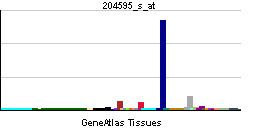Entrez 6781 | Ensembl ENSG00000159167 | |
 | ||
External IDs MGI: 109131 HomoloGene: 2374 GeneCards: STC1 | ||
Stanniocalcin-1 is a glycoprotein, a homologue of a hormone stanniocalcin, first discovered in bony fishes. In humans it is encoded by the STC1 gene.
Function
This gene encodes a secreted, homodimeric glycoprotein that is expressed in a wide variety of tissues and may have autocrine or paracrine functions. Human Stanniocalcin-1 is a putative molecular biomarker of leukemic microenvironment and the only molecular function known up to date is a SUMO E3 ligase activity in the SUMOylation cycle. STC1 interacts with lots of proteins in the cytoplasm, mitochondria, endoplasmatic reticulum and dot-like fashion in the nucleus. The N-terminal region of STC1 is the function region which is responsible to establish the interaction with its partners, including SUMO1. Low resolution studies shows that STC1 is an anti-parallel homodimer in solution and the cystein 202 is responsible for the dimerization of this protein. All the 5 dissulfide bonds of human STC1 are conserved and has the same profile of fish STC. The gene contains a 5' UTR rich in CAG trinucleotide repeats. The encoded protein contains 11 conserved cysteine residues and is phosphorylated by protein kinase C exclusively on its serine residues. The protein may play a role in the regulation of renal and intestinal calcium and phosphate transport, cell metabolism, or cellular calcium/phosphate homeostasis. Overexpression of human stanniocalcin 1 in mice produces high serum phosphate levels, dwarfism, and increased metabolic rate. This gene has altered expression in hepatocellular, ovarian, and breast cancers.
